This post is also available in: German
What is a lean canvas?
The lean canvas is a concise one-page business plan that evaluates all the main elements of your business opportunity. It is an adaptation of the Business Model Canvas designed specifically for Lean Startups. The framework is divided into nine key sections that together provide a thorough overview of the overall strategy.
Completing a lean canvas online template enables remote teams to easily collaborate and share their ideas with ease. The finished document can be continually updated, shared, downloaded and exported as a PDF.
In this article, we cover
- Completing your own lean canvas online
- How do you create a lean canvas?
- How to use our free lean canvas template
- What is the difference between lean canvas and business model canvas?
Create your lean canvas with an online template
Use our completely customizable lean canvas template for free. Simply click the image below to get started. Then you can invite colleagues to collaborate with you, share it with your team, or download it as a PDF or image.
How do you create a lean canvas?
The lean canvas template is divided into nine sections, with two subsections, that should be completed in order. Working through each section alone or collaboratively with your team, add your assumptions to each prompt as sticky notes. Don’t be afraid to continually iterate and build on those assumptions over time.
Create your own lean canvas by following the 9 steps outlined below. Once finished, share the link with your team or export it as a PDF.
1. Problem
Start by asking yourself: What is the problem we are trying to solve? What is the customer pain-point we want to solve? How prevalent is this problem?
The founders of Uber, Travis Kalanick and Garrett Camp, couldn’t get a ride on a cold night in Paris. They wondered how great it would be if they could book a taxi directly from their phone. That’s when the idea for Uber was born.
Existing Alternatives
What are the existing alternatives to the problems outlined? Taking the Uber example further, the founders would’ve written down taxis or chauffeurs in this section.
2. Solutions
How do your proposed solutions ease existing pain points? How does it make the lives of your customers better? Summarize your product or service in this section.
For example, Amazon’s lean canvas would read as ‘Enable our customers to buy any product from the comfort of their home, at the click of a button’.
3. Metrics
How will you define success for your startup? What are the KPIs you want to aim for? For a service-based start-up, these may be metrics that involve growth and adoption such as motivation, revenue, Customer Acquisition Cost (CAC) and Customer Lifetime Value (CLV).
4. Cost Structure
Irrespective of whether your startup has received seed funding or if it’s bootstrapped, every startup needs to have its finances under control. Consider operational costs, both variable and fixed, so you have a clear idea of your runway. While the numbers only need to be indicative, make sure you do some initial research into manufacturing and distribution costs to give some weight to the numbers.
5. Unique value proposition
What are you going to be doing that is different to existing products? Will you differentiate on service, price, quality, or some other way. If you get stuck, try the value proposition canvas to gain a more profound understanding of how to craft a compelling value proposition
High-Level Concept
The high-level concept subsection conveys the value proposition in the most succinct manner possible. List your X for Y analogy. E.g. YouTube = Flickr for videos.
6. Unfair Advantage
What’s your secret sauce? What do you have that will ensure that your product or service cannot be copied? Maybe it’s a new technology, like Google’s advanced secret search algorithm. Or Allbirds new fabric that makes ‘the world’s the most comfortable shoes’. It’s about what gives you an edge over the competition.
7. Customers
Your customers are the beating heart of every business. It’s important to have a very clear idea of who your ideal customers are. Highlight key demographic, psychographic and behavioral attributes of your customer segment in this section. Go a step further with the help of our user persona template and customer journey map.
Having passionate early adopters will help you achieve viral growth, so identifying who your early adopters will be and how you’ll reach them is key. For a lean start-up, this customer segment will also provide valuable early user feedback.
8. Channels
How do you plan to reach your customers? Which channels will you use to connect with your target market? Consider the media and channels your key demographic uses, and who they trust: TV news, magazines, social media, influencers or major retailers.
9. Revenue Streams
Which revenue model will you use? Depending on your product or service, you may opt for subscriptions, advertising or freemium. On top of that, consider what the lifetime value of your product will be, recurring revenue, customer value and gross margins.
What is the difference between lean canvas and business model canvas?
The Lean Canvas is a more concise, faster, portable, and effective adaptation of the Business Model Canvas. The Lean Canvas is adapted from The Business Model Canvas and designed by Ash Maurya. It is based on a lot of assumptions, rather than hard facts. Its concise design means that you can get a clear idea of the strengths and weaknesses of a potential business idea in just 30 minutes!
A Business Model Canvas is a more elaborate document that includes 5-year financial projections, market sizing data, etc. It is also designed to serve more as a product roadmap. Meanwhile, the lean canvas prioritizes experimentation over execution. It focuses on identifying how to get the product to market, while the business model canvas includes final details of executing the launch plan.
Unlike the static Business Model canvas, the Lean canvas is dynamic and evolves with every iteration.
Lean Canvas Example
We’ve filled out our lean canvas template based on Uber’s business model to showcase what a completed template could look like.
Keep the momentum going, and explore our 10 most popular business strategy templates you can use right now.

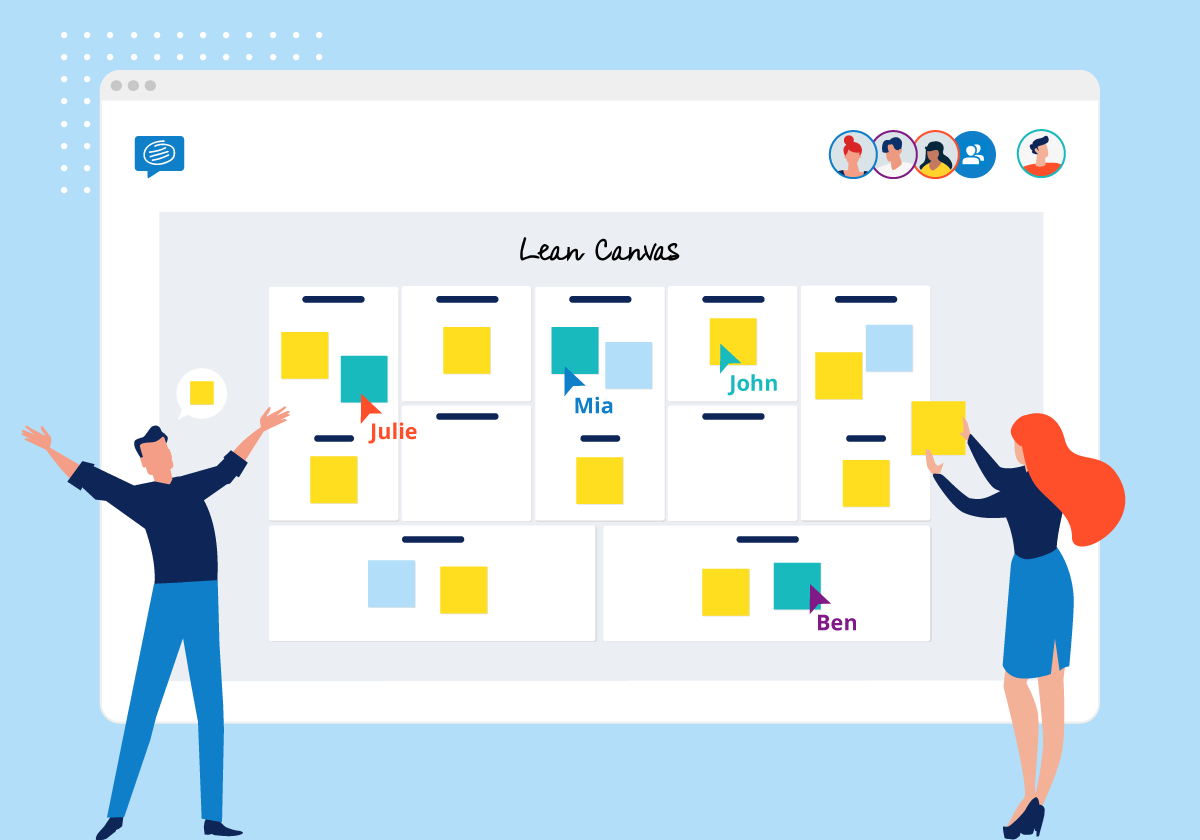
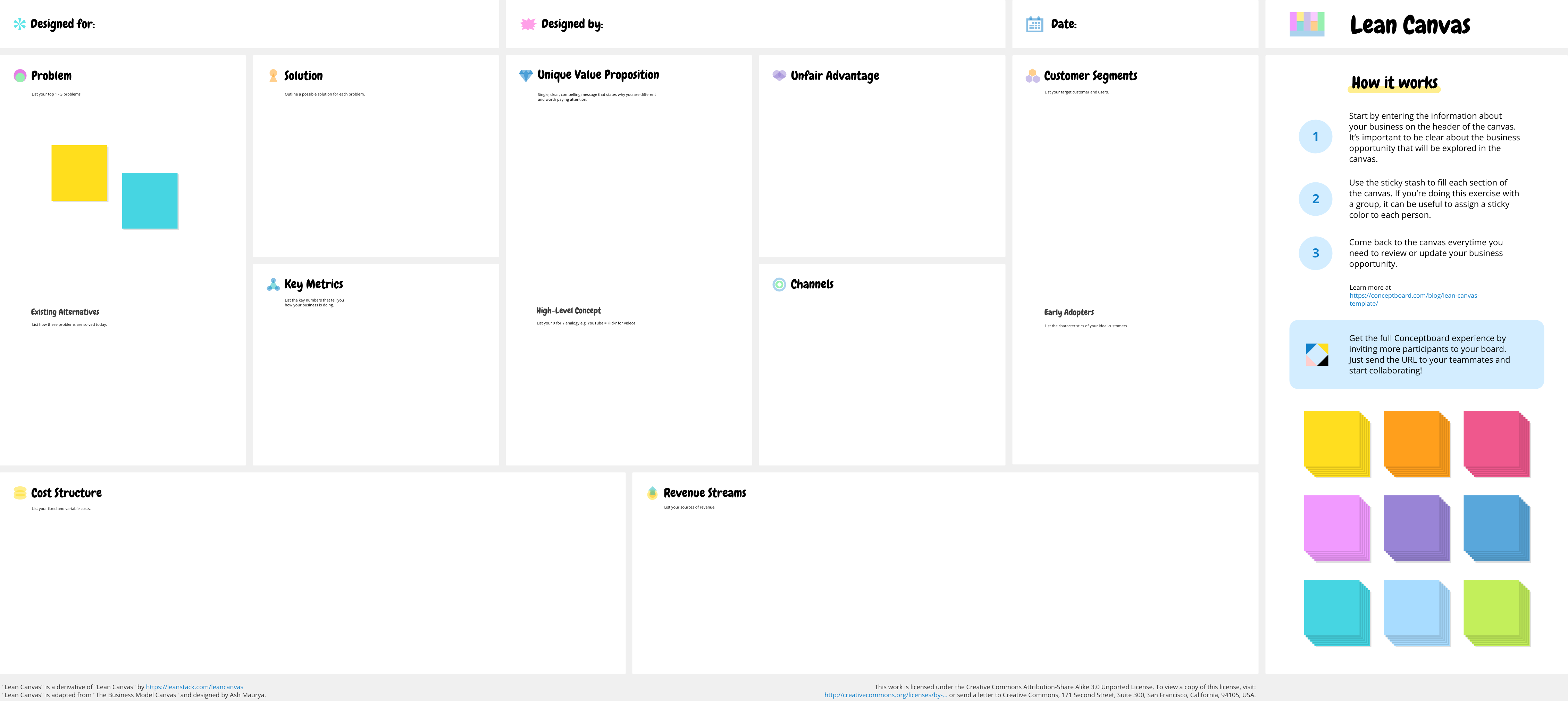
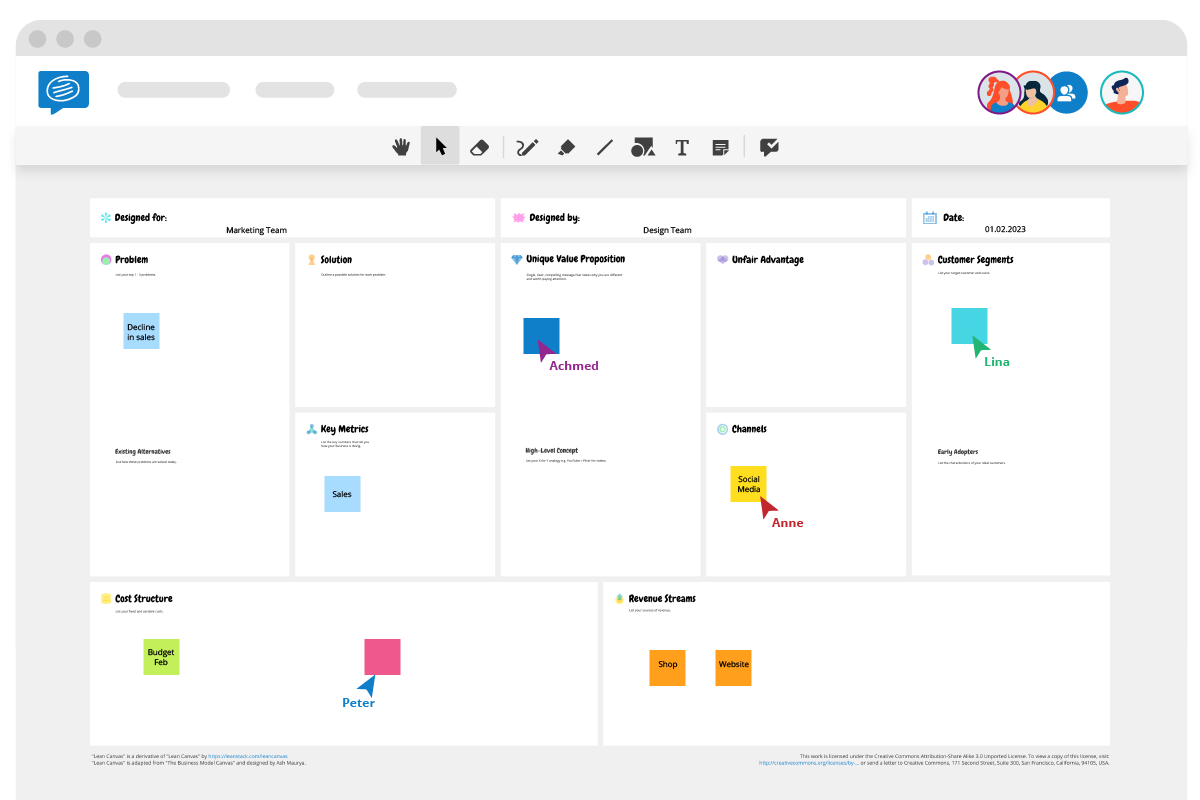

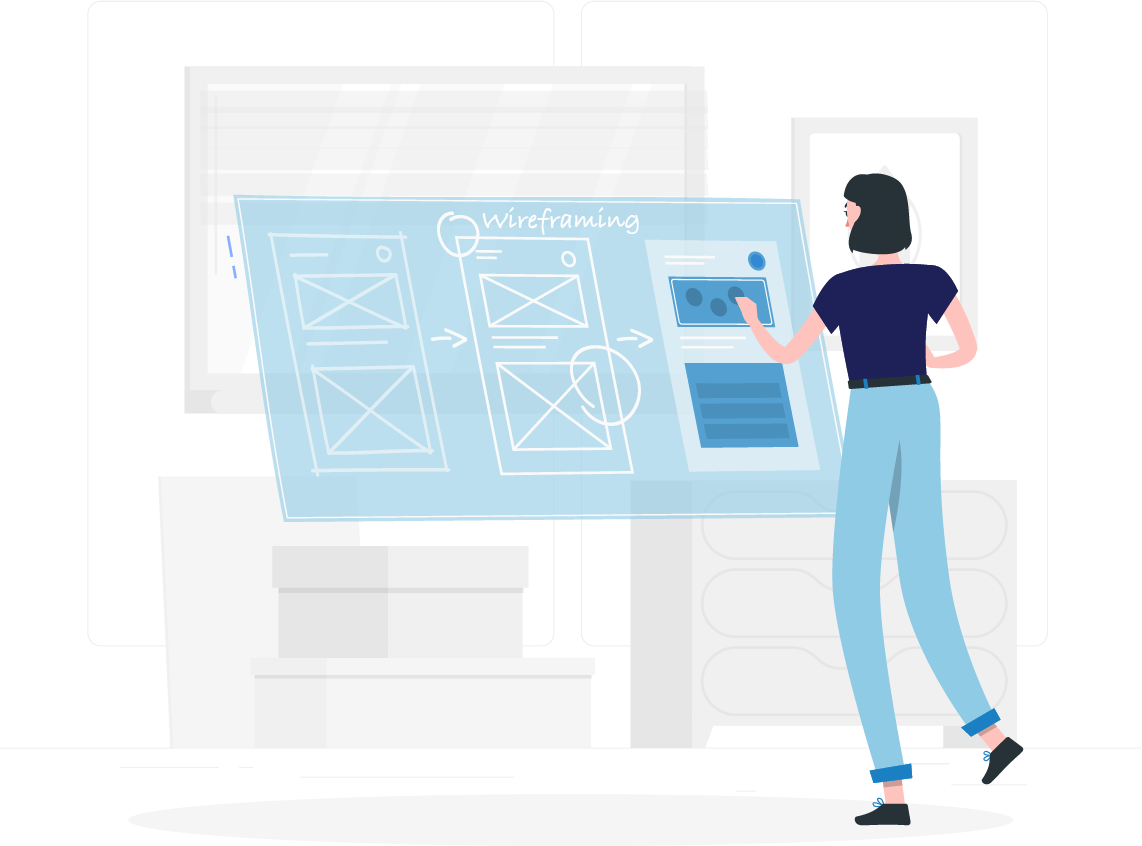
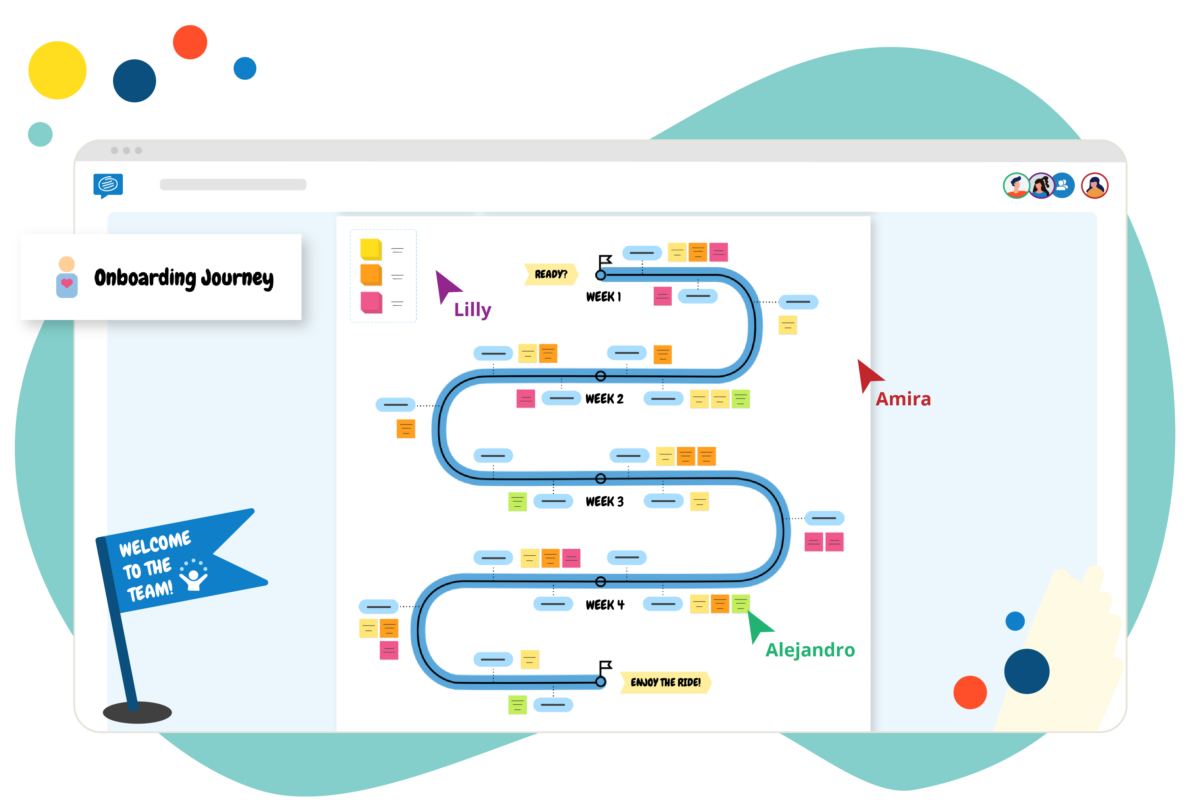
2 Comments. Leave new
The links on this page to try out the template (both the image and the Use Template button) lead to a 404 error. The correct URL should be https://app.conceptboard.com/load/lean-canvas
Thank you Thomas! The link is now fixed. Have fun using the Template!